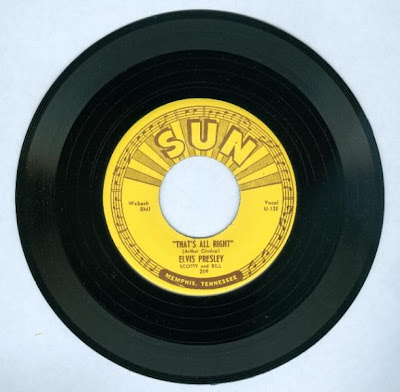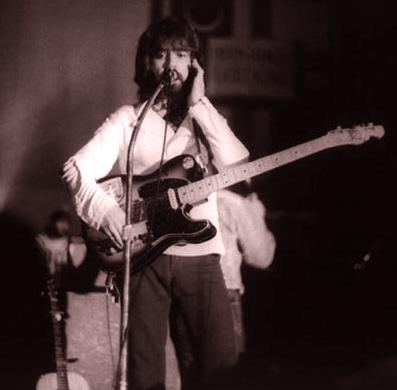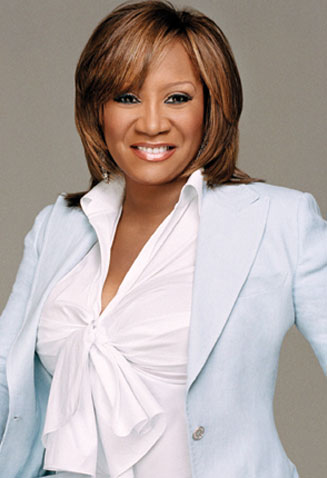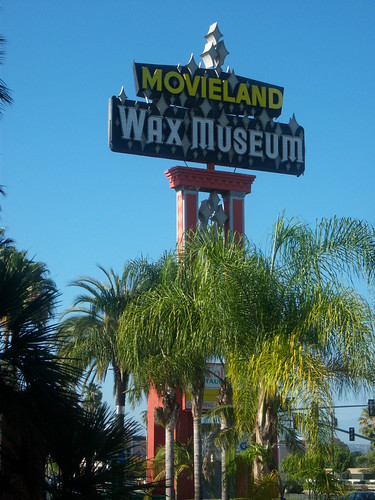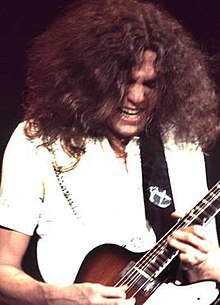1954: Elvis Presley, with Scotty Moore and Bill Black as the Blue Moon Boys, gave his first concert in the flat bed of a truck in Memphis, Tennessee.

1959: Lloyd Price scored another week at #1 on the R&B chart, his fourth, with "Personality".
1963: The Beatles performed at the Ritz Ballroom in Rhyl, North Wales.
1963: The Rolling Stones got down at the Wisbech Corn Exchange in Wisbech, Cambridgeshire, England.
1963: The Essex had the top R&B song with "Easier Said Than Done".
1965: Bob Dylan released the single "Like A Rolling Stone". Bob's still a little hesitant about having his music played on this new thing we call the Internet, so we'll honor his request about not having his song played.
1965: Frank Sinatra left his handprints in front of Grauman's Chinese Theater in Hollywood to promote his new film Von Ryan's Express, which opened the following day.
1968: Jane Asher announced that Paul McCartney broke off their engagement.
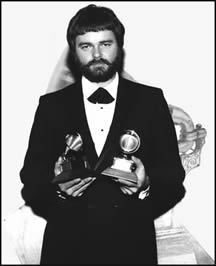
1968: "Grazing In The Grass" by Hugh Masekela became the new #1 song. Gary Puckett (from Twin Falls, Idaho) and the Union Gap rose to #2 with their latest "Lady Willpower" while the Rolling Stones remained at 3 with "Jumpin' Jack Flash". Herb Alpert fell from #1 with "This Guy's In Love With You". The rest of the Top 10: Cliff Nobles & Company fell from 2-5 with "The Horse", the 5th Dimension with "Stoned Soul Picnic", Donovan was the first of three strong movers (12-7) with "Hurdy Gurdy Man", Mason Williams moved from 29 to 8 with "Classical Gas", the Doors climbed from 22-9 with "Hello, I Love You" and the Cowsills remained at 10 with "Indian Lake". Three instrumentals are part of the Top 10 on this date; it is one of the only times in the Rock Era that this occurred.
1969: Roy Hamilton, one of several artists who had a hit with "Unchained Melody", died after suffering a stroke at the age of 40 in New Rochelle, New York.
1970: The Carpenters were guest bachelor and bachelorette on the ABC television show The Dating Game.

1971: The Carpenters premiered their NBC television summer series Make Your Own Kind of Music, with guests Herb Alpert and Mark Lindsay, the lead singer of Paul Revere & the Raiders from Boise, Idaho.
1974: Drummer Joey Ramone became the lead singer for the Ramones.
1974: The Doobie Brothers, Van Morrison and the Allman Brothers performed at the Knebworth Festival at Knebworth Park (on the grounds of the Knebworth House) in Knebworth, Hertfordshire, England (about 29 miles (47 kilometers) north of London).
1974: George McCrae and Rufus were on American
Bandstand.
1974: John Denver captured the #1 spot on the Adult Contemporary chart for the third week with "Annie's Song".
1974: George McCrae remained at the #1 slot with "Rock Your Baby", a song that would go on to sell 11 million copies--the top-selling song of the 70's! "Annie's Song" by John Denver was #2 while the Righteous Brothers made their move (10-3) with "Rock And Roll Heaven", their 19th hit and sixth Top 10. Elton John was up to 4 with "Don't Let The Sun Go Down On Me". The rest of the Top 10: "On And On" from Gladys Knight & the Pips, Steely Dan had a winner with "Rikki Don't Lose That Number", up 13 to 7, Anne Murray remained at 8 with "You Won't See Me", the Hollies were at 9 with "The Air That I Breathe" and Olivia Newton-John reached the Top 10 for the second time in her career with "If You Love Me
(Let Me Know)".
1975: The Rolling Stones were in concert at Hughes Stadium in Fort Collins, Colorado, where Elton John joined them onstage. (Note: several websites erroneously say the concert was in Denver, Colorado, and some say it was on July 19, but it was in Fort Collins on July 20, according to the newspaper 'The Fort Collins Coloradoan'.)

1975: Steven Van Zandt performed in concert for the first time as one of the members of Bruce Springsteen's E Street Band at the Palace Theatre in Providence, Rhode Island.
1976: The Eagles were at Olympic Stadium in Detroit, Michigan.
1977: Gary Kellgren, famous engineer, drowned in a swimming pool at age 38 in Hollywood, California. Kellgren worked on Jimi Hendrix's album Electric Ladyland, albums by John Lennon, George Harrison and Barbra Streisand, and was the operator of the Record Plant studio in Los Angeles.
1979: ELO released what would turn out to be the biggest hit of their career--"Don't Bring Me Down". ELO purchased advertisements in several trade papers dedicating the release of "Don't Bring Me Down" to the NASA space station Skylab, which re-entered the Earth's atmosphere over Australia and the Indian Ocean on July 11. (Note: some websites report that the group released the song on July 21. While there are no credible sources for either date, it is highly likely and makes the most sense that the group timed the advertisements to run the day that the single was released to radio stations.)
1979: Herb Alpert released the single "Rise".
1985: DeBarge completed the climb to #1 on the AC chart with "Who's Holding Donna Now".

1985: Songs from the Big Chair by Tears for Fears was #1 again on the Album chart with No Jacket Required from Phil Collins still at #2. Bryan Adams was at #3 in his 35th week with the great album Reckless. Prince & the Revolution held down #4 with Around the World in a Day and Bruce Springsteen's album Born in the U.S.A. was at #5 after 57 weeks. The rest of the Top 10: The Soundtrack to "Beverly Hills Cop", The Power Station at 7 with their self-titled album, Madonna was at #8 with Like a Virgin, the Eurythmics found their album Be Yourself Tonight at #9 and Ratt finished the list with Invasion of Your Privacy.
1986: Carlos Santana played a concert with the original members of his band on his 39th birthday.
1987: Prince completed work on his third movie, Sign O' the Times in Minneapolis, Minnesota.
1990: Madonna played at Wembley Stadium in
London, the first of three nights at Wembley.
"Right Now" from Van Halen...
1991: Van Halen remained at #1 on the Album chart with For Unlawful Carnal Knowledge but Natalie Cole was challenging with Unforgettable with Love. Skid Row fell with Slave to the Grind and Paula Abdul was at 4 with Spellbound. The rest of the Top 10: Gonna' Make You Sweat from C + C Music Factory, Luck of the Draw by Bonnie Raitt, the Soundtrack to "Robin Hood: Prince of Thieves" debuted at #7, R.E.M. was at #8 with their album Out of Time, EFIL4ZAGGIN by N.W.A. was #9 and Garth Brooks was still in the Top 10 after 44 weeks with No Fences.

1991: EMF reached #1 in their 15th week of release with "Unbelievable".
1991: Paula Abdul made it four weeks in a row at #1 on the Adult Contemporary chart with "Rush Rush".
1996: Kim Thayil of Soundgarden was arrested for assault.
1996: Gary Barlow had the #1 song in the U.K. with "Forever Love".
1999: The Rolling Stones reported an income of $337 million for two years of touring.
2005: R. Kelly had the top album with TP.3 Reloaded.
2015: Wayne Carson, songwriter of 2 of The Top 500 Songs of the Rock Era*--"The Letter" by the Box Tops and "Always On My Mind" by Willie Nelson, died Monday at the age of 72. Carson also produced, and played piano, guitar, bass, and percussion. In addition to the two monster hits listed above, he wrote "Soul Deep" for the Box Tops and also worked with Brenda Lee, Glen Campbell, Alabama, B.J. Thomas, the Pet Shop Boys, and Ike & Tina Turner, just to name a few.
Born This Day:
1933: Buddy Knox ("Party Doll" in 1957) was born in Happy, Texas; died February 14, 1999 of lung cancer in Bremerton, Washington.
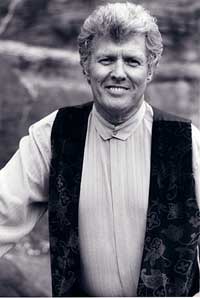
1943: Dennis Yost, the great lead singer of the Classics IV, was born in Detroit, Michigan; died December 7, 2008 of respiratory failure (had been hospitalized since December of
2006 with a brain injury).
1945: John Lodge, bassist, singer and songwriter for the Moody Blues, was born in Birmingham, Warwickshire, England. (Note: some websites claim Lodge was born in Erdington, Birmingham, England. Erdington is a suburb of Birmingham, but Lodge states that he was born in Birmingham on his official website. In 1945, when John was born, Birmingham was part of the county of Warwickshire.)

1946: Kim Carnes was born in Los Angeles.

1959: Lloyd Price scored another week at #1 on the R&B chart, his fourth, with "Personality".
1963: The Beatles performed at the Ritz Ballroom in Rhyl, North Wales.
1963: The Rolling Stones got down at the Wisbech Corn Exchange in Wisbech, Cambridgeshire, England.
1963: The Essex had the top R&B song with "Easier Said Than Done".
1965: Bob Dylan released the single "Like A Rolling Stone". Bob's still a little hesitant about having his music played on this new thing we call the Internet, so we'll honor his request about not having his song played.
1965: Frank Sinatra left his handprints in front of Grauman's Chinese Theater in Hollywood to promote his new film Von Ryan's Express, which opened the following day.
1968: Jane Asher announced that Paul McCartney broke off their engagement.

Mason Williams was going somewhere in a hurry on the chart...
1968: "Grazing In The Grass" by Hugh Masekela became the new #1 song. Gary Puckett (from Twin Falls, Idaho) and the Union Gap rose to #2 with their latest "Lady Willpower" while the Rolling Stones remained at 3 with "Jumpin' Jack Flash". Herb Alpert fell from #1 with "This Guy's In Love With You". The rest of the Top 10: Cliff Nobles & Company fell from 2-5 with "The Horse", the 5th Dimension with "Stoned Soul Picnic", Donovan was the first of three strong movers (12-7) with "Hurdy Gurdy Man", Mason Williams moved from 29 to 8 with "Classical Gas", the Doors climbed from 22-9 with "Hello, I Love You" and the Cowsills remained at 10 with "Indian Lake". Three instrumentals are part of the Top 10 on this date; it is one of the only times in the Rock Era that this occurred.
1969: Roy Hamilton, one of several artists who had a hit with "Unchained Melody", died after suffering a stroke at the age of 40 in New Rochelle, New York.
1970: The Carpenters were guest bachelor and bachelorette on the ABC television show The Dating Game.

1971: The Carpenters premiered their NBC television summer series Make Your Own Kind of Music, with guests Herb Alpert and Mark Lindsay, the lead singer of Paul Revere & the Raiders from Boise, Idaho.
1974: Drummer Joey Ramone became the lead singer for the Ramones.
1974: The Doobie Brothers, Van Morrison and the Allman Brothers performed at the Knebworth Festival at Knebworth Park (on the grounds of the Knebworth House) in Knebworth, Hertfordshire, England (about 29 miles (47 kilometers) north of London).
1974: George McCrae and Rufus were on American
Bandstand.
1974: John Denver captured the #1 spot on the Adult Contemporary chart for the third week with "Annie's Song".
1974: George McCrae remained at the #1 slot with "Rock Your Baby", a song that would go on to sell 11 million copies--the top-selling song of the 70's! "Annie's Song" by John Denver was #2 while the Righteous Brothers made their move (10-3) with "Rock And Roll Heaven", their 19th hit and sixth Top 10. Elton John was up to 4 with "Don't Let The Sun Go Down On Me". The rest of the Top 10: "On And On" from Gladys Knight & the Pips, Steely Dan had a winner with "Rikki Don't Lose That Number", up 13 to 7, Anne Murray remained at 8 with "You Won't See Me", the Hollies were at 9 with "The Air That I Breathe" and Olivia Newton-John reached the Top 10 for the second time in her career with "If You Love Me
(Let Me Know)".
1975: The Rolling Stones were in concert at Hughes Stadium in Fort Collins, Colorado, where Elton John joined them onstage. (Note: several websites erroneously say the concert was in Denver, Colorado, and some say it was on July 19, but it was in Fort Collins on July 20, according to the newspaper 'The Fort Collins Coloradoan'.)

1975: Steven Van Zandt performed in concert for the first time as one of the members of Bruce Springsteen's E Street Band at the Palace Theatre in Providence, Rhode Island.
1976: The Eagles were at Olympic Stadium in Detroit, Michigan.
1977: Gary Kellgren, famous engineer, drowned in a swimming pool at age 38 in Hollywood, California. Kellgren worked on Jimi Hendrix's album Electric Ladyland, albums by John Lennon, George Harrison and Barbra Streisand, and was the operator of the Record Plant studio in Los Angeles.
1979: ELO released what would turn out to be the biggest hit of their career--"Don't Bring Me Down". ELO purchased advertisements in several trade papers dedicating the release of "Don't Bring Me Down" to the NASA space station Skylab, which re-entered the Earth's atmosphere over Australia and the Indian Ocean on July 11. (Note: some websites report that the group released the song on July 21. While there are no credible sources for either date, it is highly likely and makes the most sense that the group timed the advertisements to run the day that the single was released to radio stations.)
1979: Herb Alpert released the single "Rise".
1985: DeBarge completed the climb to #1 on the AC chart with "Who's Holding Donna Now".

1985: Songs from the Big Chair by Tears for Fears was #1 again on the Album chart with No Jacket Required from Phil Collins still at #2. Bryan Adams was at #3 in his 35th week with the great album Reckless. Prince & the Revolution held down #4 with Around the World in a Day and Bruce Springsteen's album Born in the U.S.A. was at #5 after 57 weeks. The rest of the Top 10: The Soundtrack to "Beverly Hills Cop", The Power Station at 7 with their self-titled album, Madonna was at #8 with Like a Virgin, the Eurythmics found their album Be Yourself Tonight at #9 and Ratt finished the list with Invasion of Your Privacy.
1986: Carlos Santana played a concert with the original members of his band on his 39th birthday.
1987: Prince completed work on his third movie, Sign O' the Times in Minneapolis, Minnesota.
1990: Madonna played at Wembley Stadium in
London, the first of three nights at Wembley.
"Right Now" from Van Halen...
1991: Van Halen remained at #1 on the Album chart with For Unlawful Carnal Knowledge but Natalie Cole was challenging with Unforgettable with Love. Skid Row fell with Slave to the Grind and Paula Abdul was at 4 with Spellbound. The rest of the Top 10: Gonna' Make You Sweat from C + C Music Factory, Luck of the Draw by Bonnie Raitt, the Soundtrack to "Robin Hood: Prince of Thieves" debuted at #7, R.E.M. was at #8 with their album Out of Time, EFIL4ZAGGIN by N.W.A. was #9 and Garth Brooks was still in the Top 10 after 44 weeks with No Fences.

1991: EMF reached #1 in their 15th week of release with "Unbelievable".
1991: Paula Abdul made it four weeks in a row at #1 on the Adult Contemporary chart with "Rush Rush".
1996: Kim Thayil of Soundgarden was arrested for assault.
1996: Gary Barlow had the #1 song in the U.K. with "Forever Love".
1999: The Rolling Stones reported an income of $337 million for two years of touring.
2005: R. Kelly had the top album with TP.3 Reloaded.
2015: Wayne Carson, songwriter of 2 of The Top 500 Songs of the Rock Era*--"The Letter" by the Box Tops and "Always On My Mind" by Willie Nelson, died Monday at the age of 72. Carson also produced, and played piano, guitar, bass, and percussion. In addition to the two monster hits listed above, he wrote "Soul Deep" for the Box Tops and also worked with Brenda Lee, Glen Campbell, Alabama, B.J. Thomas, the Pet Shop Boys, and Ike & Tina Turner, just to name a few.
Born This Day:
1933: Buddy Knox ("Party Doll" in 1957) was born in Happy, Texas; died February 14, 1999 of lung cancer in Bremerton, Washington.

1943: Dennis Yost, the great lead singer of the Classics IV, was born in Detroit, Michigan; died December 7, 2008 of respiratory failure (had been hospitalized since December of
2006 with a brain injury).
1945: John Lodge, bassist, singer and songwriter for the Moody Blues, was born in Birmingham, Warwickshire, England. (Note: some websites claim Lodge was born in Erdington, Birmingham, England. Erdington is a suburb of Birmingham, but Lodge states that he was born in Birmingham on his official website. In 1945, when John was born, Birmingham was part of the county of Warwickshire.)

1946: Kim Carnes was born in Los Angeles.

1947: Carlos Santana was born in Autlán de Navarro, Mexico.
1952: Jay Jay French, guitarist of Twisted Sister, was born in New York City.
1952: Jay Jay French, guitarist of Twisted Sister, was born in New York City.
1956: Paul Cook, drummer of the Sex Pistols and later producer of Bananarama, was born in London.
1957: Merlina DeFranco, drummer with the DeFranco Family
1957: Merlina DeFranco, drummer with the DeFranco Family
1958: Michael MacNeil, keyboardist and songwriter of Simple Minds, was born in Isle of Barra, Scotland.
1962: Dig Wayne (real name Timothy Ball) of the JoBoxers, was born in Cambridge, Ohio.
1964: Chris Cornell, lead singer for Soundgarden and Audioslave, was born in Seattle, Washington.
1966: Stone Gossard, rhythm guitarist of Pearl Jam, was born in Seattle, Washington.
1972: Vitamin C (real name Colleen Ann Fitzpatrick), who had the hit "Graduation (Friends Forever)", was born in Old Bridge Township, New Jersey.
1978: Elliott Yamin, former "American Idol" contestant ("Wait For You"), was born in Los Angeles .

